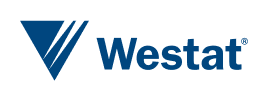This website uses cookies so that we can provide you with the best user experience possible. Cookie information is stored in your browser and performs functions such as recognizing you when you return to our website and helping our team to understand which sections of the website you find most interesting and useful.
Glaucoma is a leading cause of irreversible blindness worldwide. In the U.S. alone, it affects an estimated 3 million Americans. Tragically, only 50% of people with glaucoma even know they have the condition because the disease is asymptomatic.
At risk for the disease are
- All people age 60+
- African Americans age 40+
- Individuals with diabetes and/or a family history of glaucoma
Helping these people access eye care is critical to detecting glaucoma and controlling its progression. Reaching them is challenging.
Launching the First Glaucoma Detection and Treatment Project
In 2012, the Vision Health Initiative (VHI) of the Centers for Disease Control and Prevention (CDC) rolled out its first glaucoma detection and treatment project. As part of this initiative, CDC funded cooperative agreement grants to
- University of Alabama at Birmingham (UAB)
- Wills Eye Hospital, Philadelphia
These awardees implemented innovative community-based program interventions to improve glaucoma screening, treatment, and followup care for populations experiencing the greatest health disparities.
CDC funded Westat to
- Conduct a comprehensive process and outcome evaluation
- Assess the feasibility of executing awardees’ interventions in other communities
Using Novel Methods to Reach the Underserved
UAB established an innovative telemedicine program with 2 Walmart Vision Centers in predominantly African American communities in Alabama.
The Wills Eye Hospital, working with community-based partners, established free mobile eye exams at community sites to reach high-risk populations in underserved communities in Philadelphia. It also provided laser treatments to patients in need.
Both programs offered educational components to raise awareness about glaucoma.
Evaluating CDC’s First Glaucoma Project
Westat worked closely with both awardees over a 2-year period, evaluating the grantees
- Community outreach and partner engagement
- Glaucoma screening
- Treatment and followup care
- Patient feedback
We used the RE-AIM framework (Reach, Efficacy, Adoption, Implementation, and Maintenance) to develop common indicators. In addition to analyzing data, we visited program sites and interviewed staff and community partners.
What Westat Discovered
Westat found that both programs showed that reaching people at high risk for glaucoma and providing comprehensive eye exams resulted in high rates of glaucoma-related detections. Each program had components that showed potential for wider implementation.
Learn more about the evaluation’s findings: Applying RE-AIM to evaluate two community-based programs designed to improve access to eye care for those at high-risk for glaucoma.
-
Perspective
Teacher Apprenticeships Strengthen the WorkforceJuly 2024
Many state education agencies (SEAs) are addressing teacher shortages by creating and expanding alternative paths to the teaching profession. One fast-growing option is teacher apprenticeships,…
-
Expert Interview
Passport to Careers: Aiding Foster and Homeless Young AdultsJuly 2024
The Passport to Careers program in Washington State supports former foster youth and homeless youth unaccompanied by a parent or guardian in achieving their college…
-
Perspective
Highlights of Westat at AAPOR 2024May 2024
We’ve returned from the 79th Annual American Association for Public Opinion Research (AAPOR) Conference, held May 15-17 in Atlanta, where we caught up with colleagues…

